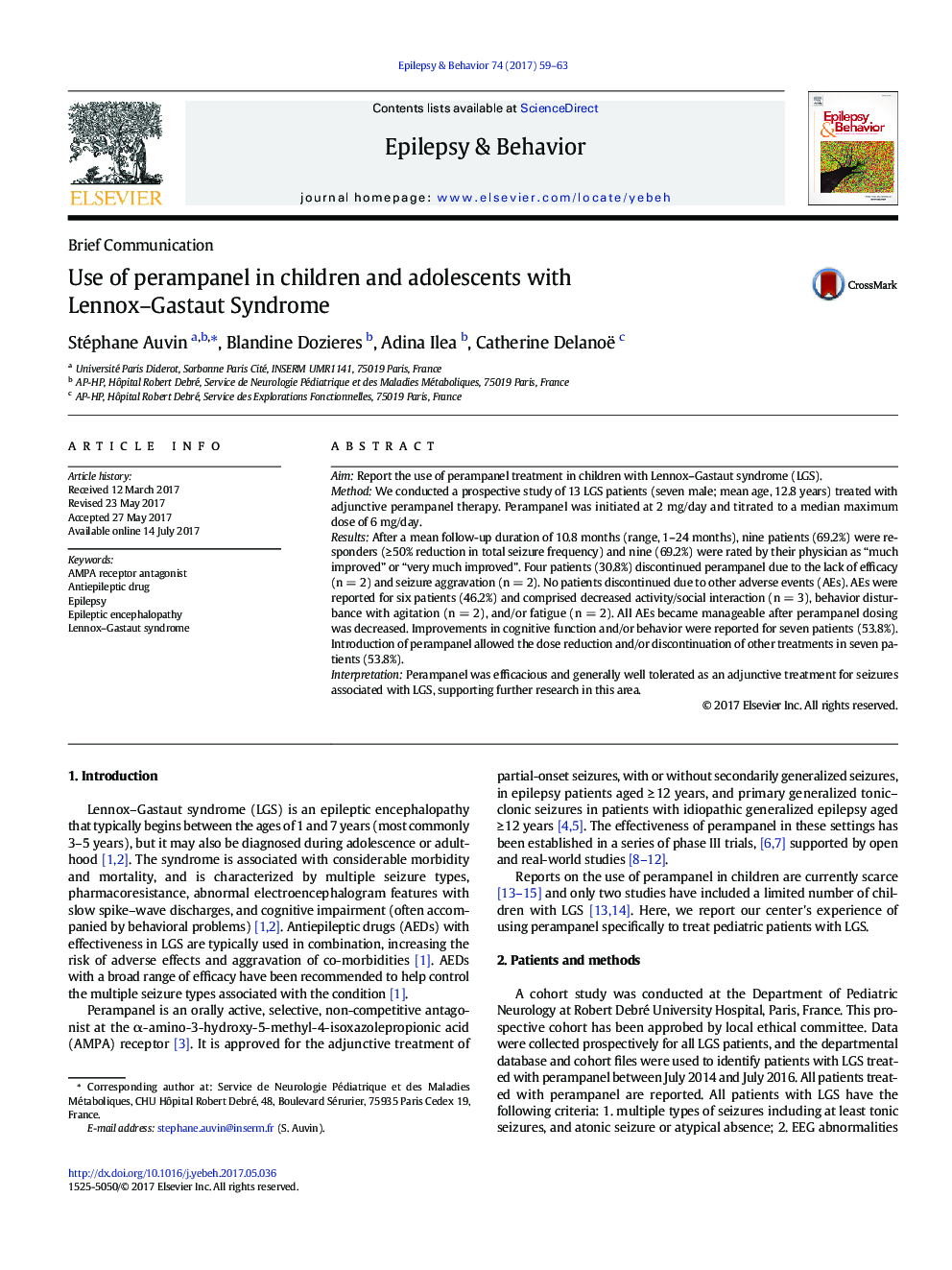| Article ID | Journal | Published Year | Pages | File Type |
|---|---|---|---|---|
| 5628227 | Epilepsy & Behavior | 2017 | 5 Pages |
â¢First prospective data on the use of perampanel in Lennox-Gastaut syndromeâ¢Improvement of seizure frequency with perampanel in Lennox-Gastaut syndromeâ¢No major side effect of the use of perampanel in Lennox-Gastaut syndrome
AimReport the use of perampanel treatment in children with Lennox-Gastaut syndrome (LGS).MethodWe conducted a prospective study of 13 LGS patients (seven male; mean age, 12.8 years) treated with adjunctive perampanel therapy. Perampanel was initiated at 2 mg/day and titrated to a median maximum dose of 6 mg/day.ResultsAfter a mean follow-up duration of 10.8 months (range, 1-24 months), nine patients (69.2%) were responders (â¥Â 50% reduction in total seizure frequency) and nine (69.2%) were rated by their physician as “much improved” or “very much improved”. Four patients (30.8%) discontinued perampanel due to the lack of efficacy (n = 2) and seizure aggravation (n = 2). No patients discontinued due to other adverse events (AEs). AEs were reported for six patients (46.2%) and comprised decreased activity/social interaction (n = 3), behavior disturbance with agitation (n = 2), and/or fatigue (n = 2). All AEs became manageable after perampanel dosing was decreased. Improvements in cognitive function and/or behavior were reported for seven patients (53.8%). Introduction of perampanel allowed the dose reduction and/or discontinuation of other treatments in seven patients (53.8%).InterpretationPerampanel was efficacious and generally well tolerated as an adjunctive treatment for seizures associated with LGS, supporting further research in this area.
